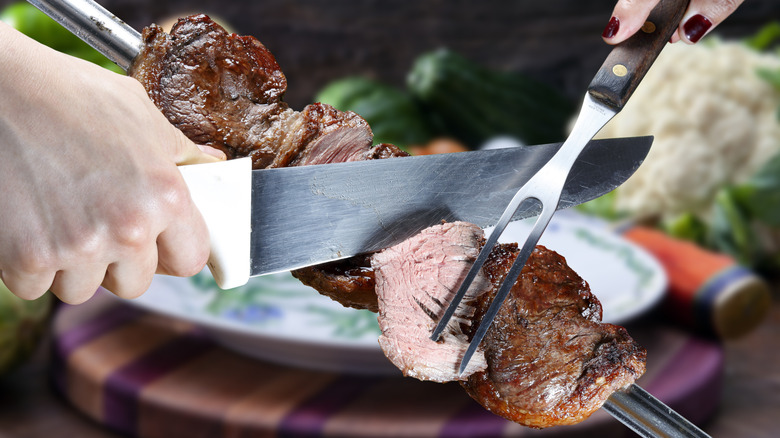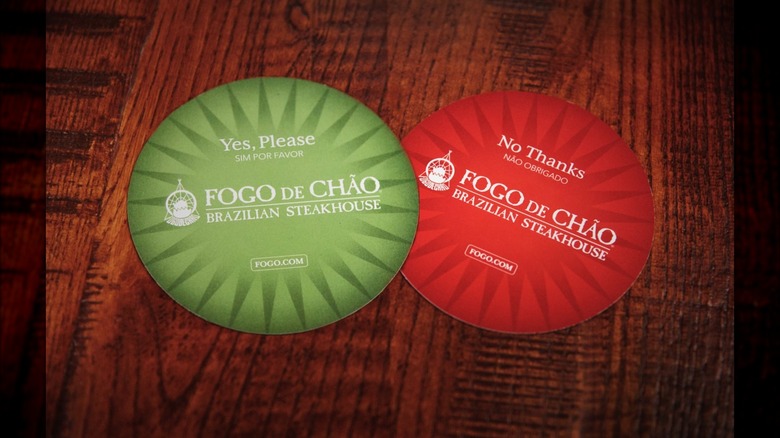Don't Go To A Brazilian Steakhouse Without Knowing How To Use The Table Cards
Brazilian steakhouses (also known as churrascarias) present a unique style of dining centered on an abundance of high-quality meats. The cornerstone of this experience is the rodízio service in which gauchos circulate the dining room with large skewers of various grilled meats, carving portions directly onto diners' plates. At the heart of this culinary adventure are the color-coded table cards that act as a communication system between diners and servers. One of the most important etiquette rules you should always follow at a Brazilian steakhouse is to be clear if you want more meat or not. That's where the cards come in. Their purpose is crucial to the flow of your meal, and the meanings of each color are akin to a stoplight's.
When your card is green side up, this signals that you're ready for more meat. The gauchos will approach your table with their skewers, offering you a tantalizing array of cuts, ranging from succulent beef and juicy pork to tender lamb and flavorful chicken. Flipping your card over to red indicates you're taking a break. This pause also allows you to enjoy the sides, visit the salad bar, or simply take a moment to digest your food.
Green means go. Red means stop.
Some of the most common mistakes everyone makes when eating at a Brazilian steakhouse include not sampling all of the meats, forgetting to pace, and of course, misusing the table card. However, if you employ some strategy, you have the power to set the tempo of your feast. Remember, a visible green card is an open invitation for gauchos to continue to offer you meat. Don't hesitate to decline specific cuts if you're waiting for a favorite to come around again. Conversely, keeping your card flipped over to red for too long might mean missing out on some of the more popular or less frequently served cuts.
In addition to the seemingly endless protein menu, Brazilian steakhouses typically feature an extensive salad bar with a selection of side dishes to complement the meats, such as pão de queijo, an iconic cheese bread; couve, collard greens with bacon; and feijoada, a hearty black bean stew. When you're fully satisfied, leave your card on red to signal the end of your main course. If you still have room in your belly, feel free to treat yourself to a luxurious dessert like bolo de cenoura, a Brazilian carrot cake topped with chocolate frosting; rabanada, a warm, crispy, cinnamon-infused bread often compared to French toast; or pudim de leite condensado, a caramel flan.

